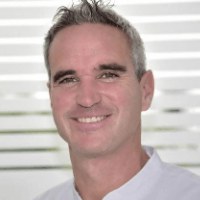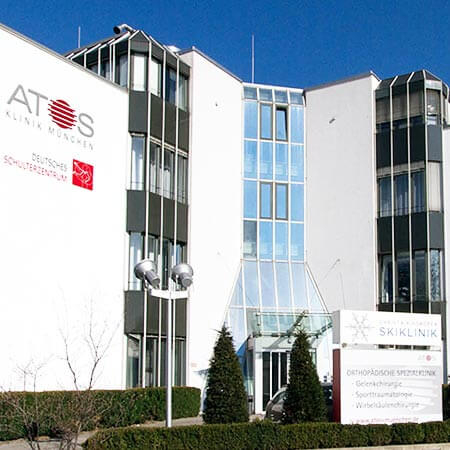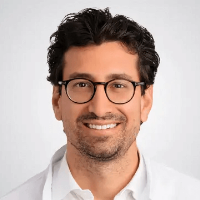Osteochondrosis — Treatment With Stem Cell in the Best Hospitals in the World
Treatment prices are regulated by national law of the corresponding countries, but can also include additional hospital coefficients. In order to receive the individual cost calculation, please send us the request and medical records.

Department of Alternative Medicine
The Department of Alternative Medicine specializes in the treatment of various types of cancer and chronic diseases using the methods of integrative medicine. The department belongs to few medical facilities in Germany, which offer individual treatment regimens using biological and integrative techniques. The department has state-of-the-art medical technologies, as well as a multidisciplinary team of competent specialists in various medical fields, including therapists, oncologists, gynecologists, urologists, orthopedists, nephrologists, surgeons, cardiologists and others. In addition, the department has a pleasant and friendly atmosphere.


Department of Orthopedics
The Department of Orthopedics offers the comprehensive diagnostics using high-precision imaging equipment, as well as conservative and surgical treatments for all diseases, injuries and functional limitations of the musculoskeletal system. The department uses the very latest treatment methods, such as acupuncture, autohemotherapy, PRP therapy, shockwave therapy, K-Taping therapy, etc. In the field of surgical treatment, the preference is always given to minimally invasive, endoscopic and arthroscopic operations.




Department of Orthopedics, Foot Surgery, Hand Surgery and Spinal Surgery
According to the prestigious medical magazine Focus, the Department of Orthopedics, Foot Surgery, Hand Surgery and Spinal Surgery is one of the best medical facilities in Germany, specializing in shoulder and knee surgery, foot surgery, and hand surgery! The department offers a full range of medical services for diseases of the musculoskeletal system. The key focus of the department's doctors is the treatment of diseases of the large joints: knee, hip, shoulder, elbow, ankle, and wrist. Foot surgery specialists are responsible for the correction of hallux valgus, hallux rigidus, clubfoot, flatfoot, and claw toes, as well as the treatment of ankle arthrosis, heel spurs, and Achilles tendon ruptures. The department regularly admits patients with hand diseases, with particular interest in the treatment of wrist arthrosis, rhizarthrosis, carpal tunnel syndrome, and Dupuytren's contracture. The therapeutic offer is complemented by conservative and surgical treatment of spinal diseases such as herniated discs, spinal canal stenosis, vertebral fractures, and others. The department's medical team offers patients effective conservative treatment methods. However, when surgery is required, arthroscopic and minimally invasive techniques are preferred to ensure the fastest possible postoperative recovery and a high level of safety.


Osteochondrosis is a general term used for degenerative changes in the spine. These changes cause pain and neurological symptoms. Up to 80% of the population suffers from back pain at least once in their lifetime. The maximum incidence rate is observed between the ages of 45 and 65 years. If you are suffering from back pain and standard treatment methods are ineffective, you can undergo stem cell therapy abroad. You can find out prices and choose medical services on the Booking Health website.
Content
- How do stem cells work for osteochondrosis?
- In what cases can stem cells be used for osteochondrosis?
- How is stem cell therapy for osteochondrosis carried out?
- What results can be expected in patients with osteochondrosis?
- Where to undergo your stem cell therapy for osteochondrosis?
How do stem cells work for osteochondrosis?
Stem cells (SCs) are non-specialized cells that have a high ability to reproduce and mature into specialized cells. They are often used in regenerative medicine for the treatment of a wide variety of diseases. Stem cells can partially restore organs and tissues damaged by the pathological process.
Treatment of the spine also involves the use of stem cells, with excellent results. They reduce pain, stimulate the regeneration of intervertebral discs and other spinal structures, and provide patients with a long-term therapeutic effect.
Stem cells work through the following two mechanisms:
- they secrete growth factors that stimulate the regeneration process in tissues, reduce inflammation, and improve blood circulation;
- they mature into specialized cells and integrate into the damaged area, replacing the defects caused by the degenerative process.
In what cases can stem cells be used for osteochondrosis?
In standard cases of osteochondrosis, patients receive conservative therapy. This includes painkillers, therapeutic exercises, physiotherapy, spinal traction, massage, and other methods.
Initially, conservative therapy works well, but over time, its effectiveness decreases. Conservative therapy is aimed only at eliminating symptoms. At the same time, degenerative processes continue in the intervertebral discs and other spinal tissues, so over time, the symptoms intensify. It is becoming more and more difficult to control them with conservative treatment methods.
If osteochondritis of the spine progresses and a patient is not satisfied with the results of the conservative therapy that he receives, surgery can be performed. Surgery is, however, associated with health risks, postoperative discomfort, and long recovery times. Therefore, many patients tend to avoid surgery and use only conservative treatment methods.
In such cases, stem cell therapy may be considered. It helps not only to delay the operation but, in many cases, to avoid it. Stem cells work well both as monotherapy for osteochondrosis and in combination with other conservative methods.
How is stem cell therapy for osteochondrosis carried out?
The use of stem cells is not one of the most frequently used treatment methods for osteochondrosis. Even in developed countries, this type of treatment is only available in a small number of hospitals. Different medical centers use different approaches because the stem cell therapy is not standardized.
Physicians can use stem cells from a variety of sources, but most commonly, they are taken from the patient's bone marrow, blood, or adipose tissue.
Stem cells are administered locally or systemically. Systemic use involves intravenous injections. With this approach, a good therapeutic result is also achieved, since stem cells have the ability to "find" damaged areas in the body and accumulate in them, exerting a therapeutic effect and restoring damaged tissues. However, stem cells are more often injected directly into the affected area, namely the intervertebral discs, facet or sacroiliac joints, and epidural space.
The frequency and number of injections may vary. It depends both on the experience gained by the hospital and on the clinical effect. Many patients get good results after the first injection, and they need repeated courses of stem cell therapy only after a few months or even after a few years. If the effect is insufficient, stem cells will be injected repeatedly once every 4-8 weeks to improve the therapeutic result.
What results can be expected in patients with osteochondrosis?
The use of stem cells is effective for most patients, and the effect persists for a long time.
In approximately three-quarters of patients, a significant reduction in pain or complete disappearance of the pain syndrome persists for 3 months or more after the injection of stem cells. After 6 months, the effect persists in two-thirds of patients. After a year, more than half of the treated people still have the same therapeutic results.
In the future, some patients will not need repeated stem cell injections because their intervertebral discs will partially recover. As a result, standard conservative methods will become more effective, and it will be possible to successfully control the disease with their help. If the effect becomes insufficient, you can undergo a course of stem cell therapy again.
Where to undergo your stem cell therapy for osteochondrosis?
Perhaps there are no hospitals in your country that use stem cells for the treatment of osteochondrosis, or there are very few such hospitals, because this is an innovative method that has not yet become widespread in the world. Nevertheless, cell therapy is already being used at many medical centers in developed countries. You can undergo your treatment abroad to get rid of back pain for a long time.
You are welcome to use the Booking Health website to find out prices, compare the average cost of treatment at different hospitals, and choose a medical care program at the best price. When you make your appointment through Booking Health, the cost of services for you will be lower than when you contact the hospital directly. Prices will be reduced due to the lack of taxes for foreign patients. The specialists from the Booking Health company will help you select a hospital and arrange your trip abroad.
Authors:
The article was edited by medical experts, board-certified doctors Dr. Nadezhda Ivanisova and Dr. Vadim Zhiliuk. For the treatment of the conditions referred to in the article, you must consult a doctor; the information in the article is not intended for self-medication!
Sources:

